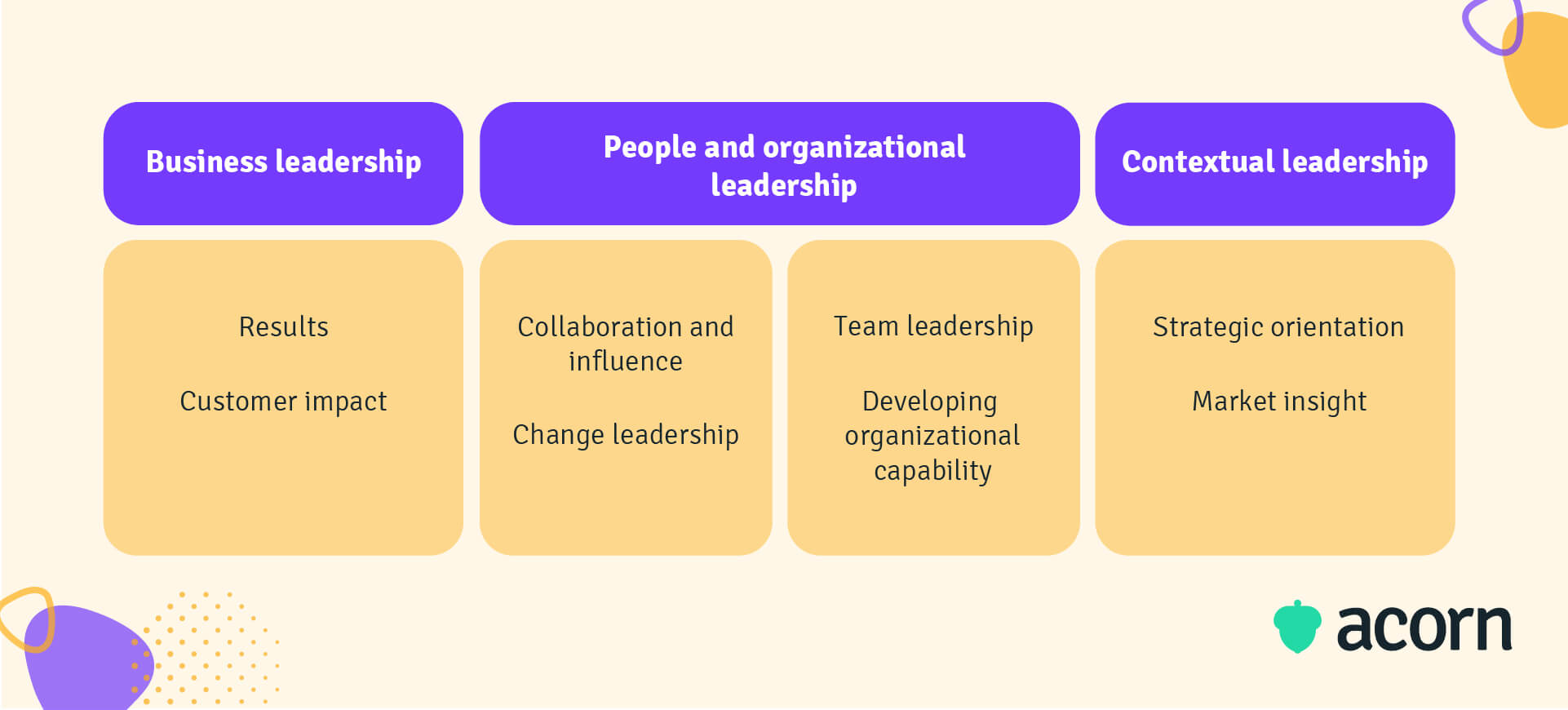The Value of Executive Development for Future Leaders
Reading Time:

Lead the pack with the latest in strategic L&D every month— straight to your inbox.
SubscribeWhile executive development has historically been a way for business leaders to pad out their resume, a pandemic and economic uncertainty call for a more proactive approach to developing leaders.
Executive education needs to be timely, relevant and actionable—especially if you want executives to give their precious time to it.
Everything you need to know about the importance of executive development programs, how to sell them to executives, and best practices for a program is included in this guide.
What is executive development?
Executive development is the process of developing certain capabilities, either in existing executive officers or employees who will succeed current executives. The goal is often to improve strategic performance and future-thinking abilities rather than build entirely new skills.
Why is executive development important?
In his book Why Smart Executives Fail, Sydney Finkelstein says there are four ways executives can falter.
- Mindset: For whatever reason, there’s a fundamental error in how executives view business problems and opportunities.
- Attitude: When you live and work by a status quo, you allow poor decision-making skills to thrive.
- Information breakdowns: Silos, gatekeeping and decentralised systems affect the conditions in which executives work.
- Personal qualities: Selfish, misguided or simply ineffective behaviours create corporate vulnerabilities rather than removing them.
Remember that though executives exist solely in large organisations, there can be less support and more ambiguity when they transition into strategic roles from operational leaders. Their focus becomes solely strategic, which means there are fewer of them. And at the most senior level, performance (good or bad) is magnified.
What this means for BAU
Harvard Business Review found 67% of strategies fail because of a lack of competitive context needed to execute them. It takes up to 18 months to accurately assess an executive hire, and even then, only 30% will live up to expectations.
Reacting to poor performance means you’re likely going to have to do some kind of peripheral damage control (lack of team cohesion, productivity lags, failure to meet targets). It’s hard to reverse damage once it’s already been done, which is why proactive executive development programs are the most successful and impactful.

If you’re not preparing the people driving your organisation to, well, actually drive your organisation forward, then you face some big consequences.
- Market valuation decreases from poor strategy execution
- Workplace culture suffers from resentment and unclear performance expectations
- Turnover rises, and with it, the cost of severance packages and replacements
- If you’re high profile enough, poor leadership can impact your reputation as an employer and market player.
This isn’t solely on the executive. It comes back to your executive leadership development as a whole. Consider it an exercise in risk management and value creation.
Enabling development with strategic impact is literally why we created the performance learning management system (PLMS). It’s the only solution that codifies and operationalises capabilities through bespoke learning recipes for each learner’s betterment. For executives, that means learning is relevant, timely, and efficient (i.e., not a waste of their precious time), and assured to have both individual and organisational impacts. (Aka, a win-win.)
What are the principles of executive development?
In a five-year study of 700 public companies, McKinsey found there are three core tenets of high performing executives.
- Thought leadership
- People & organisational leadership
- Leadership in the market.

This is a little high level, right? Let’s backtrack for a moment.
Here’s a hard truth: The skills that get many executives to the point of executive leadership often aren’t the ones that maintain success at that level. A gap commonly emerges between their capabilities and those of their direct reports, but this poses a problem when those direct reports are varying degrees of operational leaders who translate strategy for the workforce.
So how can you be sure that they are equipped to impart the right knowledge? How do you know they can create business outcomes that other layers of the workforce buy into? Can you be sure they can meet the evolving opportunities in your market?
We circle back to McKinsey’s findings. Truly effective executive development aims to:
- Develop thought leadership to build consensus and mould strategy
- People and organisational leadership to influence and motivate the workforce
- Industry leadership skills to differentiate from competitors and drive growth, revenue or success.
What are the main goals of executive development?
If the aim of executive development is to create value and protect against business cataclysms, then the goals of an executive development program are rooted in creating resilient business leaders.
That gives you a few goalposts to focus on:
- Find and address skills gaps
- Create and maintain business value
- Develop strategic thinking skills.
Plug skills gaps
Part of professional development is addressing issues or gaps early. (Remember: The key term here is proactive.) They’ll likely show up quicker in executives; the cost of inaction, squandered opportunities or unchecked problems have a greater effect at the strategic level.
But since technology, economies and societies move quickly, you can’t expect executives to remain high performers without some help. And while leadership and management development focuses on internal mechanisms, executive leadership skills gaps are a different ballgame.
If you need a little help identifying the skills that may be missing, consider McKinsey’s take on the business skills and behaviours needed in senior executives.

Retain competitive advantage
There are two reasons this should be a goal of executive education:
- If you’re onboarding an external hire, you’ll need a way to impart critical knowledge and context.
- To prevent obsolescence in your current executives.
Reducing strategic uncertainty is part of your executives’s responsibilities. But strategy degrades over time. Left untended, your competitive advantage goes with it. Their role in operational talent management, strategic realisation and value creation depends on plugging skills gaps.
Develop future leaders
Succession planning is crucial for managing your critical roles. What happens in the event of retirement? A sudden leave of absence? Emerging and succeeding executives won’t always be fully formed. High potential may be a leading indicator, but it’s not a guarantee.
A strong bench is invaluable and safeguards you against the risks and learning curves associated with sudden departures or external hires. A continuous executive development process will create not just a continuous pipeline of talent, but a reserve of critical knowledge, skills, behaviours and relationships throughout your organisation.
Best practices for executive development programs
As with other employee and management development initiatives, executive development programs are about building muscle.

And like real strength training, theory ain’t going to cut it. You need to get practical with executive education programs in order for performance to be positively impacted.
Coaching
Business or executive coaches are often outside of the organisation, with a unique insight into the industry or business model. They’re successful in their own right, all of which makes them a pool of knowledge to include in your executive education programs.
It’s kind of like a safe space for people in some of the most high-pressure jobs. Their purpose is not to tell executives what to do or judge choices, but provide insight, experience and resources that inform executive decision making.
You can engage professional coaching consultants or encourage executives to seek out their own coaches. The former will often have clients in non-competing industries that face similar issues. In the latter scenario, an exec may have a contact from a previous job or through a friend who’s useful.
Job rotations
This may sound strange for those already in some of your top jobs, but think back to when we said that the challenges facing your business are more varied than ever. And then think about those you’re priming to move into executive roles.
Job rotations allow employees to develop multifaceted capabilities. Without them, you’re putting employees at a disadvantage. Think about it in terms of talent mobility.
If you don’t expose employees to other perspectives and issues, they remain biased toward the politics, problems, and solutions of their own function. When bias prevails, innovation stalls. And when behaviours and mindsets are limited, executives and their organisations fail.
Courses & certifications
You can always go the traditional route with an executive development course. There’s value in external training, just with coaching, but in a more structured format.
- You may not have the resources internally to translate talent strategy into executive development programs, in terms of instructors, content or time.
- Executives benefit from a collaborative environment with other leaders. It’s also a safe space for them to discuss issues, without the bias of organisational circumstances.
- Many business management schools provide a broad perspective across all business functions—something that may be new to freshly minted executives.
Essentially, your executives gain a high-level experience that may not be possible in the nuanced culture of your standard professional development. That’s important for all levels of leadership. Even ineffective and inefficient managers only have one or neither of these perspectives; trained and skilled managers understand you need both.
When choosing a provider for executive leadership development, keep an eye on certain tangible chops like:
- A proven history of delivering results
- Current and practical content
- A measure of impact as an outcome.
How to get executives to buy in to development programs
The biggest pushback you’ll find on programs will be from executives themselves.
Executives need a sense of urgency in their development more than any other job family. They’ve likely already undergone another leadership development program; maybe they have an MBA or other qualifications.
You’ll need to answer a few questions to sell it.
- Why me?
- Why this training?
- Why now?
Why me?
Executives deal with daily proposals and requests for their time, so this one better be good. The point to get across is that you’re not questioning their abilities, but increasing their value.
Why this training?
Bank on definitive KPIs here. There needs to be a measure of time-to-impact and other strategic ROI indicators for them to see the value of a specific pathway.
Why now?
What are the risks that they’ll face if they don’t undergo this training? Or, how will the risks to business affect them? It should be an opportunity to head on emerging challenges in the landscape and to help them comfortably keep pace with change.
Key takeaways
An executive education program gives your senior leaders time to stop and think—a luxury in a role that’s constantly thinking about present and future needs.
It’s not only skills you need to worry about. Effective executive development programs seek to stamp out toxic mindsets and idle behaviours.
Best practices utilise training methods that require immediate action. Coaching, job rotations and courses from business schools create broader business perspectives in your executives and shows them the tangible impacts of executive development.
Make sure you’re plugging identified skills gaps with training, to gain buy-in. This is the way to develop future leaders who will maintain and grow your competitive advantage.